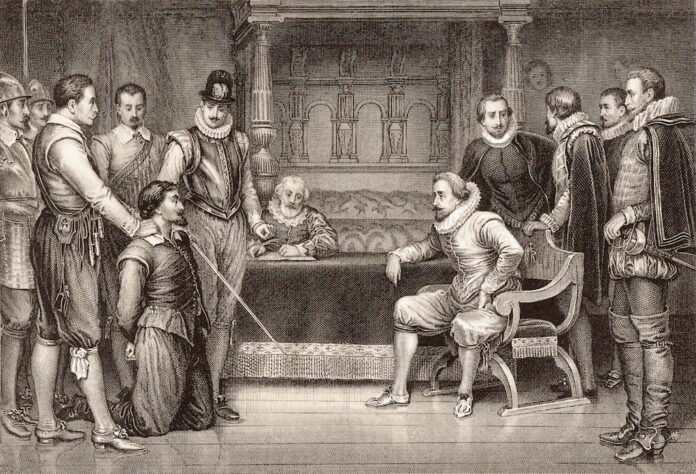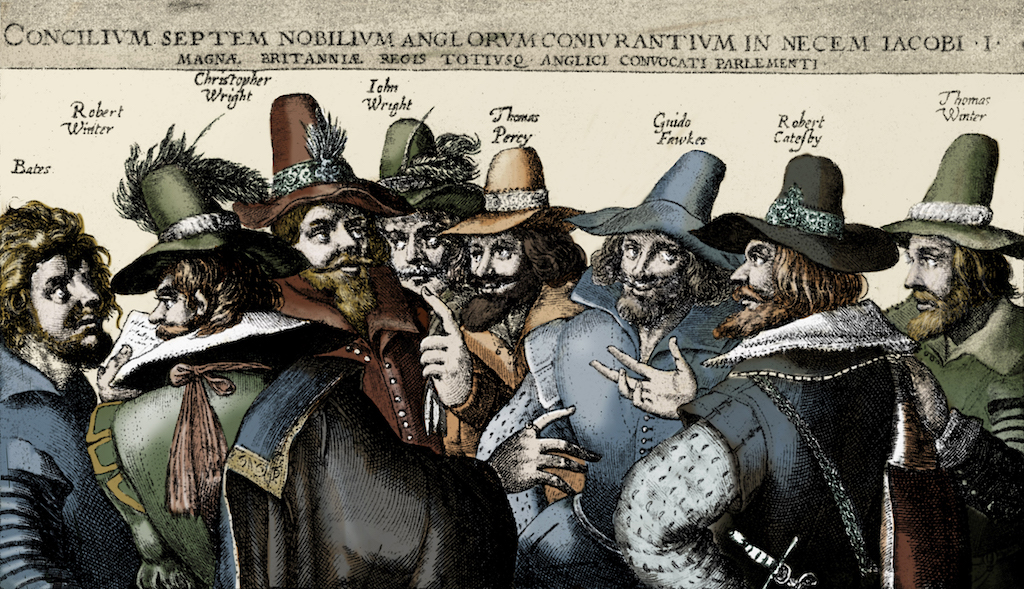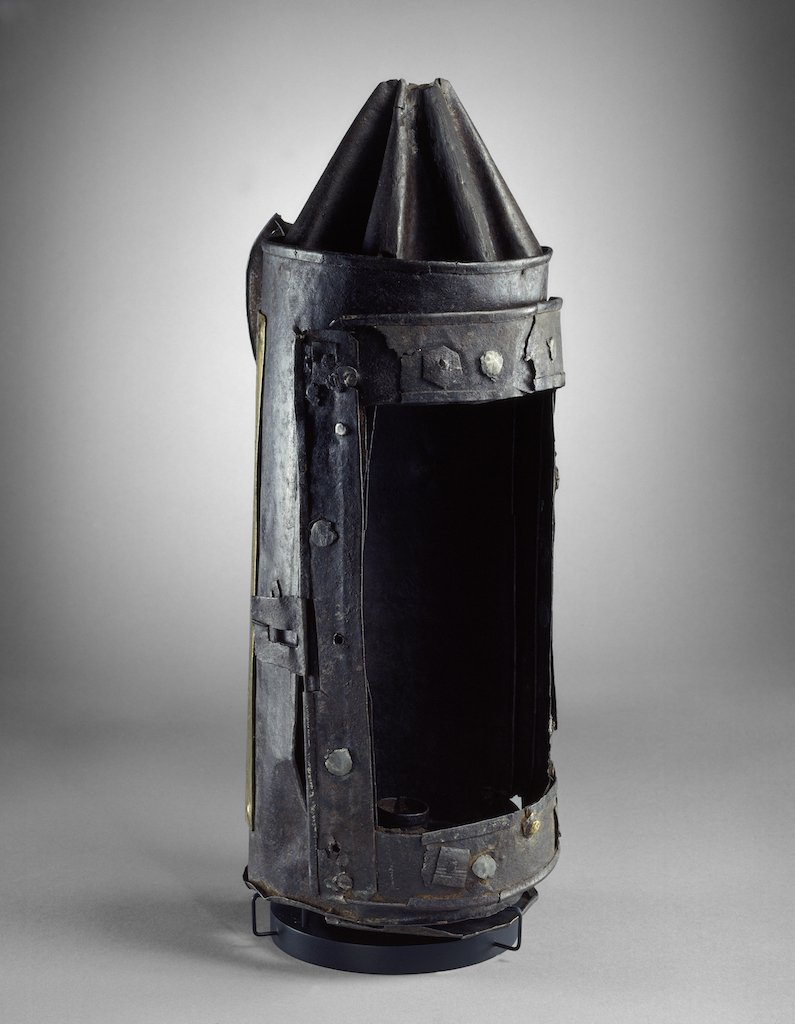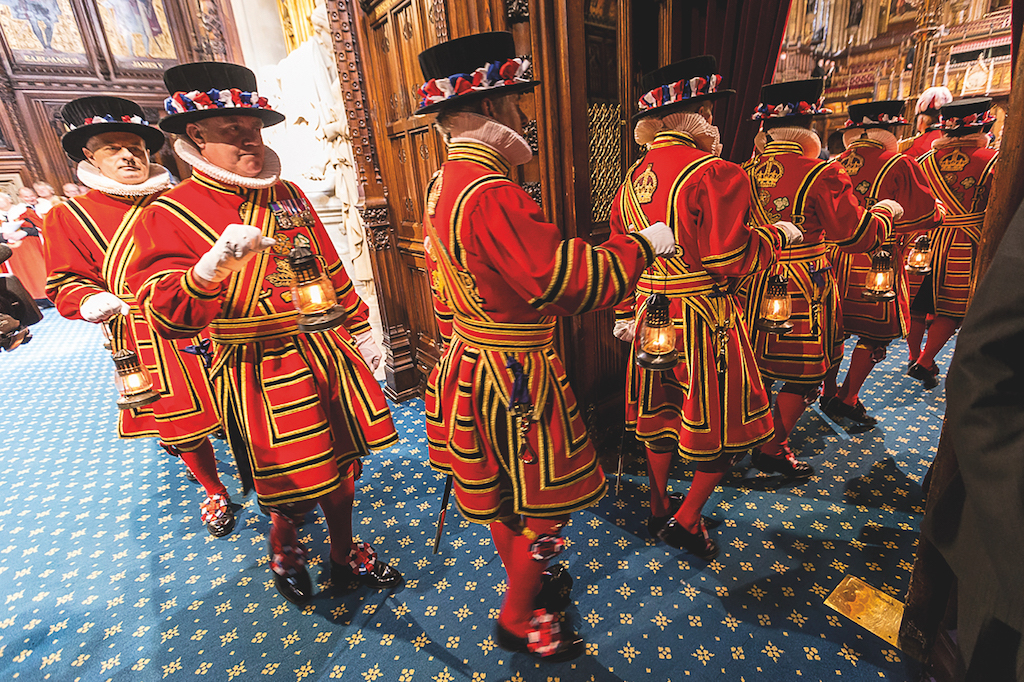
Remember remember, the fifth of November, so the poem goes, but what was the true story behind the Gunpowder Plot – and was its protagonist Guy Fawkes really a freedom fighter or a fool?
So why do we remember remember the 5th of November?
A clerk noted in the margin of the journal of proceedings of the House of Commons, 5 November 1605: “This last night the Upper House of Parliament was searched by Sir Tho. Knevett; and one Johnson, servant to Mr Thomas Percye, was there apprehended; who had placed 36 barrels of gunpowder in the vault under the House, with a purpose to blow King and the whole Company, when they should there assemble. Afterwards divers other gentlemen were discovered to be of the Plot.”
It is a remarkably dry, bureaucratic record of a conspiracy that came within a whisker of blasting King James I, the Lords and Commons to high Heaven, and later a shocked Parliament would rage over the “most barbarous, monstrous, detestable and damnable Treasons.” They would also discover that ‘Johnson’ was in fact Guy Fawkes, and in the cloak-and-dagger world of 17th-century intrigues there was much more to untangle. Even now people differ over whether Fawkes – burnt in effigy atop bonfires every November – was a freedom fighter or foolhardy fanatic.
With Bonfire Night just days away, it’s timely we remember, remember the 5th of November…

of ‘The Gunpowder Plotters conspiring’ by Crispijn van de Passe, 17th century. Credit: Lebrecht History/Bridgeman Images
Guy was the second of four children of Edward Fawkes, a lawyer in York’s ecclesiastical courts, and was raised a Protestant. However, when he was eight his father died and his mother Edith subsequently married a Catholic, Dionis Baynbrigge: influencing Guy, despite widespread persecution of Catholics at the time, to convert to Catholicism too.
Apparently his new faith ran deep and in 1593 Fawkes enlisted as a mercenary fighting for a Catholic Spanish army against Protestant Dutch forces in the Netherlands. Gaining a reputation as “highly skilled in matters of war”, he was also described as very devout; he certainly grew into a striking presence, tall with reddish-brown hair, a bushy beard and a flowing moustache.
Back at home, following the death of Elizabeth I in 1603, James VI of Scotland succeeded as King James I of England, but for the country’s Catholics there was no change for the better. Shadowy diplomatic machinations abroad, including by Fawkes to encourage Spain to invade, also came to nought (instead Spain and England signed a peace treaty in 1604). A handful of Catholic gentlemen, largely from the Midlands, decided to take action.
At the centre of the web – there would be 13 conspirators in all – was charismatic Robert Catesby, a known Catholic troublemaker. He was joined by his cousins Thomas and Robert Winter, and hot-headed Thomas Percy. Fawkes was recruited after a meeting in Ostend with Thomas Winter, and brought expertise in gunpowder and tunnelling to the party. Others included Sir Everard Digby (whose story can be explored at Coughton Court in Warwickshire) and another Catesby cousin, Francis Tresham (whose ancestral family home, Rushton Hall in Northamptonshire, is now a luxury hotel). Two more, Percy’s brothers-in-law Christopher and Thomas Wright, had coincidentally been Fawkes’s contemporaries at St Peter’s School in York.

The plot, hatched in early 1604, proposed to blow up King James, his sons and Parliament, and to kidnap the nine-year-old Princess Elizabeth (lodged at Coombe Abbey in Warwickshire, today another luxury hotel); to enthrone Elizabeth as a puppet Queen, and marry her off to a Catholic peer, thus putting Catholicism back in the ascendancy. What could possibly go wrong?
Percy rented a small residence next to the House of Lords in May 1604 and installed Fawkes there masquerading as his servant John Johnson. But their plan of digging a tunnel in which to plant gunpowder proved excessively difficult and instead, in March 1605, they managed to rent a House of Lords basement storeroom where they proceeded to stash 36 barrels of gunpowder hidden beneath firewood.
By the by, in a couple of twists to the plot, Percy had been appointed as one of the King’s bodyguards in June 1604, while in December it’s claimed Fawkes had attended a wedding in Whitehall where he came within a sword’s length of James: if any impetuous thoughts had crossed his mind, he suppressed them.
After several postponements, the opening of Parliament was set for 5 November 1605. Imagine, then, the horror of the conspirators when they heard that an anonymous letter had been delivered to the Catholic Lord Monteagle on 26 October, warning him of impending danger and to stay away. They suspected Francis Tresham, Monteagle’s brother-in-law, had betrayed them – he denied it – but observing that the Government seemed to dismiss the letter, they pressed on with their plans.
So it was that Guy Fawkes found himself with his lantern (now an iconic exhibit at Oxford’s Ashmolean Museum) sitting in the Lords’ basement storeroom on 4 November. Approached by passing government officials, he maintained the bluff that he was guarding his master’s firewood and provisions. The men went away and Fawkes continued to wait, watching the hours slowly pass on a pocket watch given to him by Percy.

Then suddenly, around midnight, another search party appeared, led by Sir Thomas Knyvett, keeper of Westminster Palace. A fierce struggle saw Fawkes overpowered and he was dragged before the King in his bedchamber where, with astonishing sang-froid, he boldly admitted that he had intended to blow up Parliament and everyone in it.
Cast into the Tower of London and still maintaining his John Johnson identity, Fawkes answered “interrogatories” with defiance: if the Queen and royal children had been caught up in the blast, “he wuld not have helped them”; if King and Parliament were destroyed, “the people of themselves would decide a head”.
He refused to reveal his co-conspirators and so James ordered: “If he will not other wayes confesse, the gentler tortours are to be the first usid unto him…” According to the official government account, The King’s Book, the mere sight of the rack was sufficient to make Fawkes spill names; the almost illegible ‘Guido’ (Guy) signature on his confession of 9 November suggests he had been sorely tortured.
In the following weeks the other conspirators, who had fled, were either killed in combat or rounded up for trial and execution. Fawkes was hung in Westminster’s Old Palace Yard on 31 January 1605 and his quartered body parts publicly displayed “to become a prey for the fowls of the air.”
Curiously, Francis Tresham was ‘saved’ from such a violent fate, having reportedly died of natural causes in the Tower, which fuelled suspicions that he had indeed been some sort of double agent. It has been argued that the Government, knowing about the conspiracy, had engineered its dramatic ‘last-minute discovery’ as propaganda to ignite a public backlash against Catholics. Whatever the truth, the Gunpowder Plot made life for English Catholics uncomfortable for years to come.
A Thanksgiving Act (1606) declared 5 November an annual celebration of “the joyful day of deliverance” and, although the Act was repealed in 1859, we still mark the date up and down the land with a jolly pageant of fireworks and bonfires. Sitting in effigy on top of the flames Guy Fawkes, the man caught with the gunpowder, has become a historical scapegoat. But there should never be any doubt over his fiery belief in the plot’s explosive aims, or that he so very nearly succeeded in lighting the fuse.
Read more:
Bonfire Night facts: 8 fascinating things you probably didn’t know
Autumn in Britain: the 10 best places to see stunning autumn colours





 © 2024
© 2024